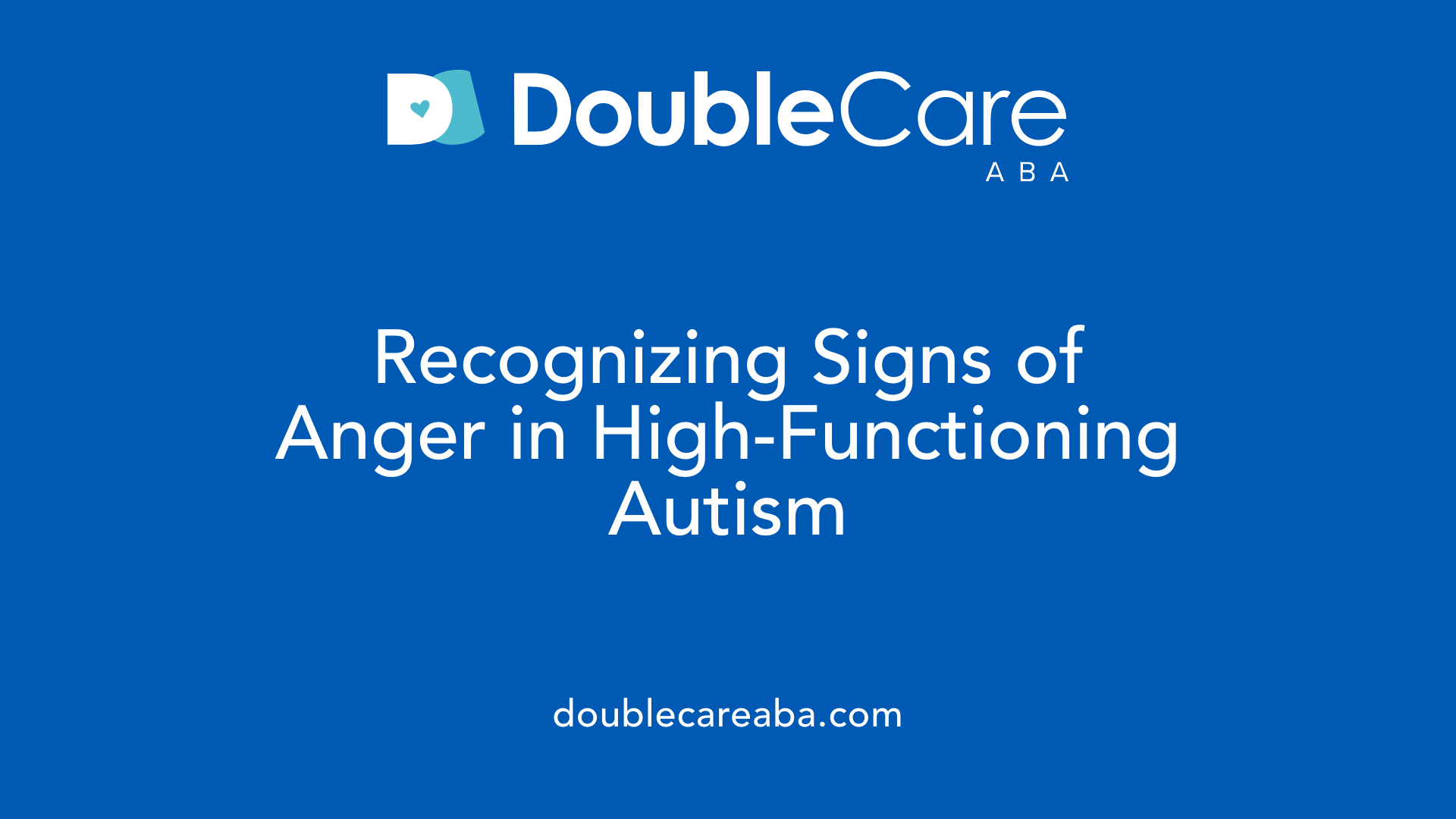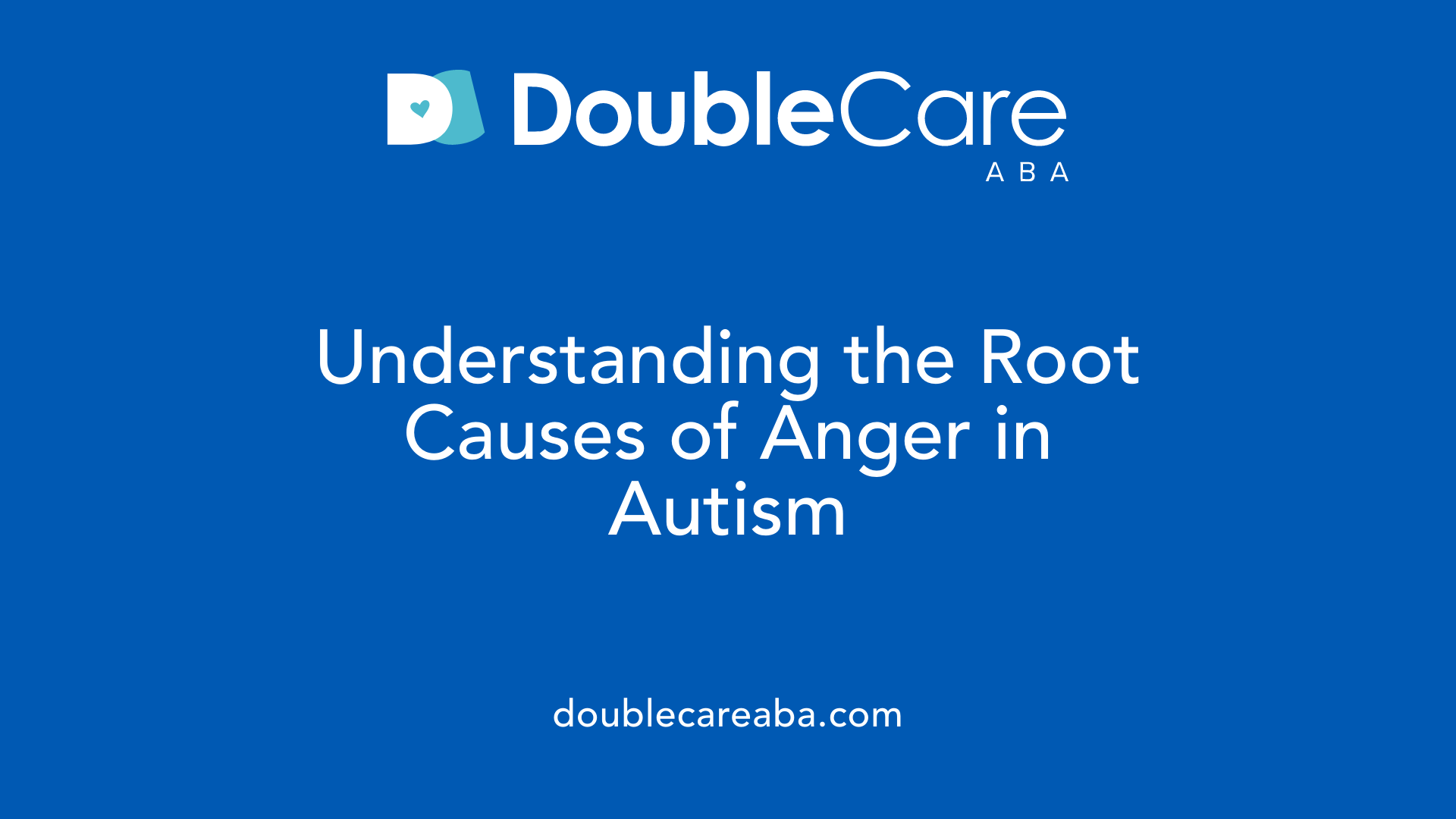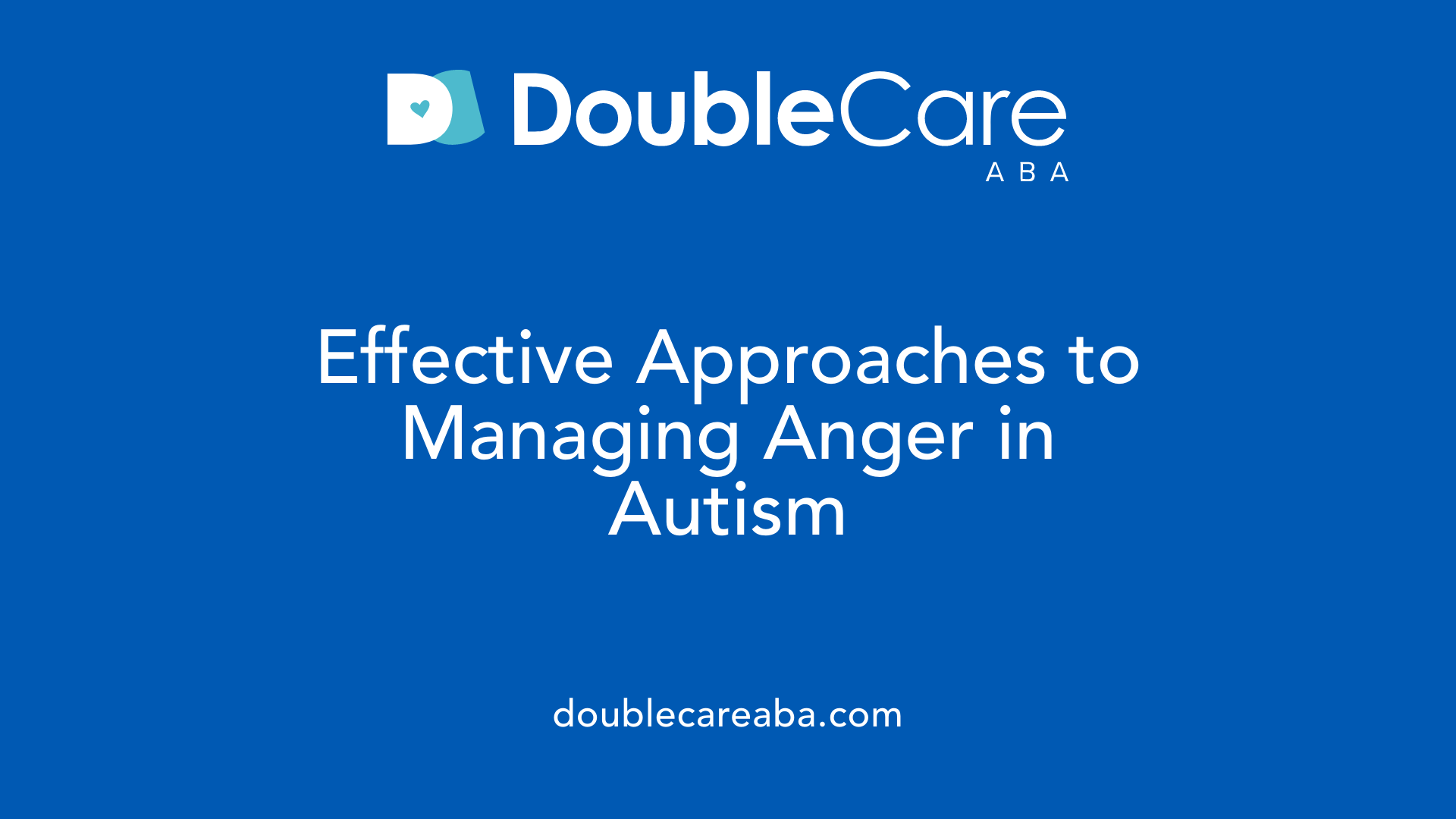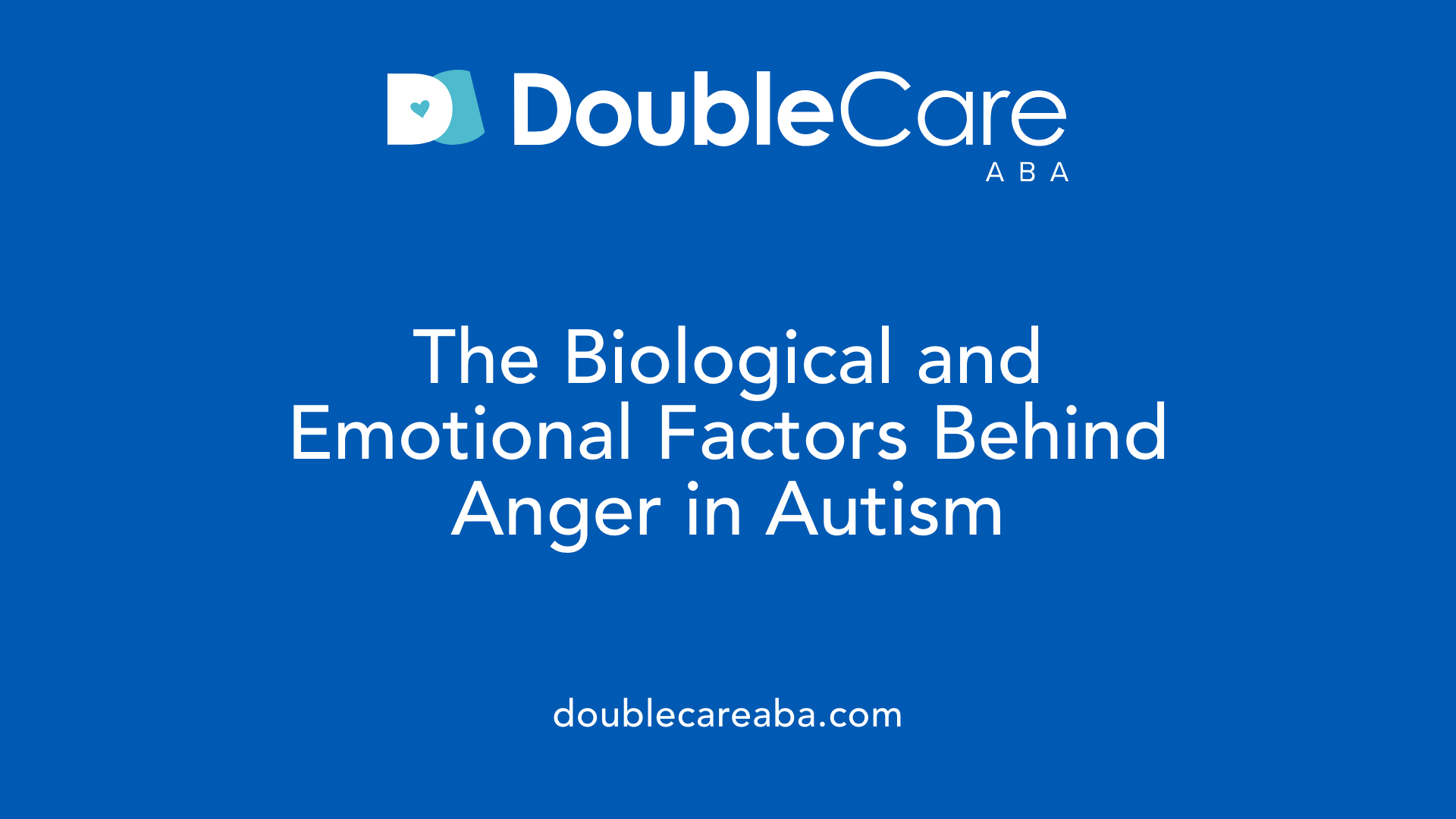High Functioning Autism And Anger
Navigating Emotional Challenges in High-Functioning Autism

Understanding Anger in High-Functioning Autism
High-functioning autism (HFA) presents unique emotional regulation challenges. Among these, anger is a common yet complex issue, often stemming from difficulties in social understanding, sensory sensitivities, and communication. This article explores the manifestations, causes, and management strategies for anger in individuals with HFA, aiming to provide insights for caregivers, educators, and healthcare professionals.
Manifestations of Anger in High-Functioning Autism

What are common manifestations of anger in individuals with high-functioning autism?
People with high-functioning autism often display anger through various outward behaviors and emotional signs, especially during overwhelming or stressful situations. These manifestations can appear as emotional meltdowns, irritability, or even aggressive acts. For example, a person may shout, hit objects, or engage in self-harm as a reaction to sensory overload or frustration.
In children, anger may manifest as crying, pacing, rocking, or tantrums that last from a few minutes to hours. Adults might show their anger through verbal aggression like shouting or name-calling, or physical actions such as hitting or slamming objects. Some individuals may also exhibit injuries to themselves, scratching, or headbanging.
In addition to observable behaviors, internal processes such as anger rumination—that is, dwelling on negative thoughts—can worsen the emotional response, making it harder to calm down. This repetitive negative thinking increases frustration and can lead to more intense rage episodes.
Recognizing these signs early, understanding their triggers, and implementing calming strategies are essential steps. Providing a predictable routine, offering safe spaces, and seeking professional support like therapy can aid in developing better emotional regulation. Managing these manifestations is crucial for improving quality of life and reducing conflict.
Causes of Anger and Emotional Dysregulation

What are the causes of anger and emotional dysregulation in high-functioning autism?
Individuals with high-functioning autism often experience anger and emotional difficulties due to several interconnected factors. Sensory sensitivities are among the most common triggers; loud sounds, bright lights, or certain tactile sensations can quickly overwhelm them, leading to feelings of frustration or distress.
Processing social cues presents another challenge. Difficulties in interpreting facial expressions, tone of voice, and understanding others' perspectives can cause misunderstandings and feelings of alienation. When social interactions do not go as expected, individuals might feel misunderstood or isolated, increasing the likelihood of anger.
Changes and unpredictability can also prompt emotional reactions. Many autistic people prefer structured routines and familiar environments, so disruptions or unplanned events can lead to heightened anxiety and emotional escalation.
Cognitive and emotional factors play a role too. Ruminative thinking—repetitive dwelling on negative experiences or perceived injustices—deepens emotional distress and can result in rage attacks. Additionally, challenges with impulse control and the difficulty in expressing emotions in socially acceptable ways often lead to aggressive behaviors.
Stressors such as relationship difficulties, academic or employment pressures, and medical issues like sleep disturbances or gastrointestinal problems further contribute to emotional dysregulation.
Understanding these multifaceted causes is essential in developing effective strategies for managing anger and emotional distress. Approaches like establishing predictable routines, providing clear communication, and teaching emotional awareness can help reduce these triggers and promote better emotional regulation for individuals on the autism spectrum.
Approaches and Interventions for Managing Anger
 Managing anger in individuals with high-functioning autism requires a comprehensive, tailored approach that addresses emotional, sensory, and behavioral aspects.
Managing anger in individuals with high-functioning autism requires a comprehensive, tailored approach that addresses emotional, sensory, and behavioral aspects.
One effective strategy is cognitive-behavioral therapy (CBT), which helps individuals identify anger triggers, understand their feelings, and develop better coping skills. CBT encourages recognizing unhelpful thoughts and replacing them with more constructive ones, reducing impulsive reactions.
Applied Behavior Analysis (ABA) is another widely used intervention. It employs positive reinforcement, modeling, and proactive strategies to teach alternative, socially appropriate behaviors and impulse control. ABA focuses on skill development to help manage emotional responses effectively.
Using visual supports and social stories can significantly aid understanding. Tools like emotion thermometers or visual cues help individuals recognize and label their feelings, including anger. Social stories provide context-specific scenarios and coping steps, preparing individuals for upcoming social challenges.
Sensory regulation techniques are also beneficial. Activities such as deep pressure, calming sensory toys, or sensory breaks help reduce overload from sounds, lights, or tactile stimuli, preventing frustration from sensory overload.
Creating structured routines provides predictability, which many people with high-functioning autism find comforting. Consistent daily schedules and visual timetables limit surprises and reduce anxiety that can trigger anger.
Physical activity and relaxation practices are important outlets. Activities like bouncing, running, yoga, or deep breathing exercises can help release pent-up energy and calm the nervous system during stressful moments.
Combining these strategies—behavioral therapy, visual supports, sensory regulation, structured routines, and physical activity—offers a holistic approach to managing anger. When necessary, professional guidance and even medication may support overall emotional regulation.
A multidisciplinary plan that emphasizes communication, routine, sensory management, and emotional skill building provides the strongest foundation for reducing anger episodes and fostering better coping in high-functioning autism.
Supporting Strategies for Parents and Caregivers

What strategies can parents and caregivers use to support individuals with high-functioning autism who experience anger?
Supporting individuals with high-functioning autism (HFA) who experience anger involves a proactive and compassionate approach. One of the first steps is to identify specific triggers such as sensory overload, abrupt routine changes, or difficulties in communication. Recognizing these triggers allows for targeted interventions to prevent escalation.
Implementing structured routines and visual supports is highly effective. Consistent schedules and visual aids like charts or pictures provide predictability, reducing anxiety and frustration. When routines are stable, individuals often feel more in control, which can lessen angry responses.
Teaching coping skills is crucial. Techniques like deep breathing, sensory regulation activities (e.g., squeezing a stress ball), and calming stimming behaviors help manage emotional surges. Encouraging physical activities, such as bouncing or running, can also release accumulated tension.
Creating safe spaces where individuals can retreat when overwhelmed is another important strategy. These calm environments give them a chance to self-regulate without feeling threatened or stressed.
Professional guidance can enhance these efforts. Therapies such as Applied Behavior Analysis (ABA), social skills training, or counseling (including cognitive-behavioral therapy) provide personalized techniques for managing anger. They also help develop emotional literacy, enabling individuals to better understand and articulate their feelings.
Advance notice of potential changes or disruptions allows the individual time to prepare, reducing surprise and distress. Combining these approaches fosters a supportive environment where individuals with HFA can learn to manage their emotions more effectively, leading to improved well-being and better social interactions.
Biological, Metabolic, and Emotional Influences

What biological, metabolic, or emotional factors influence anger in individuals with high-functioning autism?
Adults and children with high-functioning autism often experience anger that isn’t simply a reaction to immediate circumstances but is deeply rooted in underlining biological, metabolic, and emotional processes.
On a biological level, differences in brain activity play a significant role. Research indicates that atypical patterns in the prefrontal cortex, which is responsible for decision-making and impulse control, along with the limbic system, which regulates emotions, can make emotional regulation more challenging for autistic individuals. These neurobiological differences can lead to heightened impulsivity and difficulties in managing anger.
Metabolic issues, particularly disturbances in how the body processes glucose—such as insulin resistance—may also impact mood and behavior. When brain energy regulation is compromised, individuals might experience increased irritability or lability, which can elevate the risk of aggressive responses during stressful situations.
Sensory processing differences are another critical factor. Many individuals with high-functioning autism are highly sensitive to sensory stimuli like loud noises, bright lights, or tactile sensations. Overload from these stimuli can quickly overwhelm their processing capacity, leading to emotional distress or outbursts as a means of coping.
Emotionally, perceiving and interpreting feelings can be challenging. Difficulties in recognizing their own emotions or understanding others’ cues often result in frustration and anger. This is compounded by environments filled with misunderstandings or social miscommunications, which can trigger emotional overload.
Furthermore, environmental triggers such as noisy settings, sudden changes in routine, or overwhelming social interactions frequently set off heightened emotional reactions. Repetitive negative thoughts, often called anger rumination, delay emotional recovery and can intensify angry episodes.
Altogether, the interplay of neurobiological, metabolic, sensory, and emotional factors creates a complex web that influences how anger manifests in individuals with high-functioning autism, emphasizing the importance of tailored approaches for management and support.
Addressing Emotional Regulation and Rumination
 How can emotional regulation and anger rumination be addressed in high-functioning autism?
How can emotional regulation and anger rumination be addressed in high-functioning autism?
Managing emotional responses in individuals with high-functioning autism requires a multi-faceted approach tailored to their unique neurocognitive profile. Cognitive-behavioral strategies are central in helping individuals recognize and understand their emotions. Techniques like cognitive reappraisal— viewing situations from different perspectives—can reduce the intensity of anger and prevent escalation.
Mindfulness and relaxation methods, such as deep breathing, visualization, and progressive muscle relaxation, promote calmness and improve awareness of emotional shifts. These practices can help individuals pause before reacting impulsively to stimuli, decreasing the likelihood of aggressive outbursts.
Sensory integration therapies can assist those overwhelmed by environmental stimuli, reducing triggers for anger. For example, using weighted blankets or sensory-friendly environments can mitigate sensory overload, which often precipitates frustration.
Parents and caregivers play a crucial role in reinforcing emotional regulation skills. Consistent routines, visual supports, and coaching in social-emotional skills help generalize coping mechanisms outside clinical settings. This involvement ensures that techniques learned are applied in daily life, reducing the tendency toward maladaptive rumination.
Advances in technology offer additional support through neurofeedback and other innovative interventions. Neurofeedback trains individuals to modulate brain activity linked to emotional regulation, potentially improving neural pathways involved in managing anger and stress.
Overall, an integrated intervention plan combining evidence-based therapies, sensory strategies, caregiver participation, and technological tools can significantly improve emotional control in high-functioning autism, thereby decreasing anger rumination and enhancing overall well-being.
Medication and External Support Options

Are medication options available for managing anger in individuals with high-functioning autism?
Yes, medication options are available for managing anger and irritability in individuals with high-functioning autism. These medications are primarily used to reduce severe aggression, temper outbursts, and related behaviors rather than directly addressing core autism traits such as social communication differences.
Two FDA-approved medications specifically for irritability associated with autism are risperidone and aripiprazole. They can help decrease tantrums, aggressive behaviors, and self-injury, often leading to improved quality of life. However, these medications are usually prescribed under close medical supervision and are part of a broader management plan.
In addition to antipsychotics, medications like clonidine and selective serotonin reuptake inhibitors (SSRIs) are sometimes used off-label. These can help manage symptoms such as impulsivity, anxiety, and mood swings that contribute to anger.
It’s important to understand that responses to medication can vary among individuals, and there can be side effects. Therefore, treatment should be carefully tailored and regularly monitored by healthcare professionals. Medication is often most effective when combined with behavioral therapies, environmental adjustments, and skill development strategies.
Overall, medications serve as a useful component of a comprehensive approach to managing anger in high-functioning autism, enhancing emotional regulation and reducing distress when used appropriately.
Supporting Emotional Well-being in High-Functioning Autism
Understanding the multifaceted nature of anger in high-functioning autism is essential for fostering supportive environments and effective management strategies. Combining behavioral therapies, environmental adjustments, skill-building, and, when appropriate, medication can significantly improve emotional regulation. Educating caregivers, teachers, and individuals themselves about the triggers and manifestations of anger paves the way toward healthier coping mechanisms. Ultimately, tailored interventions that acknowledge each individual's neurobiological and emotional profile will empower those with high-functioning autism to navigate their emotions more effectively, leading to greater well-being and social success.
References
- Understanding High-Functioning Autism Anger Issues
- High-Functioning Autism and Anger - Golden Care Therapy
- Common Causes of Anger in Individuals with Autism - Pasadena Villa
- Autism and anger management - a guide for parents and carers
- Association between anger rumination and autism symptom severity ...
- How to cope with autism anger in adults - MedicalNewsToday
- High-Functioning Autism and Anger - Mental Health Center Kids
- Understanding High-Functioning Autism Anger Issues
















